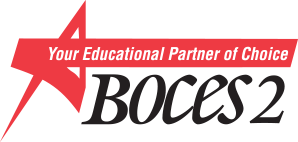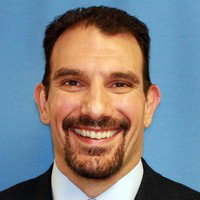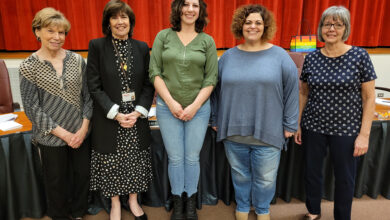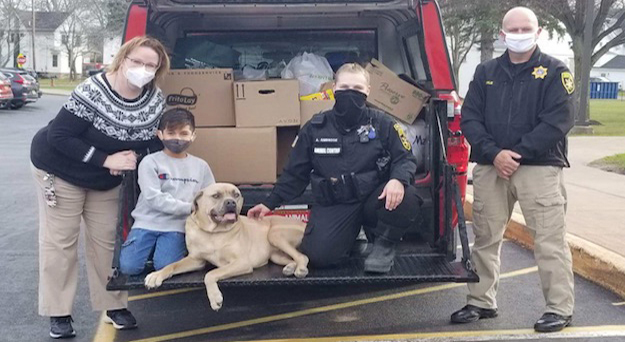BOCES 2 offers Community Schools Initiative this year

by Beth Nash
Monroe 2-Orleans BOCES (BOCES 2) is offering a new Community Schools Co-Ser to its component districts this school year. Designed to help districts meet the gaps in need between students’ school lives and home lives, this new Co-Ser connects community agencies and government departments with school communities to offer their services.

At the helm of this initiative is new Regional Community Schools Coordinator Joe Fantigrossi. He comes to BOCES 2 with 27 years of experience working in education. He spent the last nine years doing Community Schools work in Seneca and Wayne Counties. In his new role, Fantigrossi will guide local school districts in forging deeper relationships with community and government partners. He works with both Monroe One and BOCES 2 component districts, and he is starting his work this year with Churchville-Chili, Gates Chili, Greece and East Irondequoit districts, who are all at different levels of development. He said Churchville-Chili, East Irondequoit and Gates Chili are in the early stages of development, while Greece is in year seven of implementation.
In an interview, Fantigrossi provided more details on Community Schools and what he hopes to have happen if Monroe County districts purchase this service.
What are Community Schools?
“Community Schools are connections. It’s place-based and person-centered. It’s a different way of thinking; it’s developing a strategy. It must be able to meet evolving needs. Some of the biggest concerns in districts are meeting basic needs, like food security, housing, out of school time programming and physical health (dental, mammograms, etc.) needs. School districts can’t provide everything, but they can host various agencies coming in, such as offering mobile mammograms or dental clinics on site.”
How are schools going to provide these services to their communities?
“Schools will act as a hub of services for their students and families. There are a lot of resources in Monroe County that are not well-known, so I hope to make those more available to districts and help schools forge partnerships with these agencies. I want district staff to be aware of what is available and have confidence in referring people to those resources. One of the determining factors for whether to offer services on campus or off depends on the size of the need; if it’s for a large group of people, it would be offered on-campus, but if it’s for individuals, it would be offered off-campus.”
Why would a district purchase the Community Schools Co-Ser?
“From a district’s perspective, they assess what their assets and needs are for their students. Districts try to leverage their assets to meet student needs, but there are some things they can’t provide. I help them find partners to meet those needs. I also want to help districts pare down any duplication in services so that resources are streamlined.”
What is the goal of having Community Schools in each district?
“My goal is for each district to have a Community School Coordinator. The Coordinators would conduct needs and asset assessments in their districts, providing them with facts and data to drive their decisions, not assumptions. Schools utilize a tiered intervention system, known as Multi-Tiered Systems of Support (MTSS), to effectively match students with interventions that meet their needs. After students’ needs are assessed, data is collected on their academic performance and practices put into place to address those needs. When determining what practices to use, different options are explored; they can be research-based, restorative or reflect the culture of the school community, whatever meets their needs. For example, I had one district form a partnership with Hobart and William Smith Colleges. College students tutored the high school students, helping the younger students raise their grades.”
Does Community Schools address dignity, equity and inclusion standards?
“The principles behind Community Schools are to be: culturally responsive, trauma informed, community based, research based, restorative and driven through MTSS work. That is also the equity strategy behind it. Teachers can’t teach without data. At the same time, to be a teacher is to be an artist. Teachers understand nuance and context, and they reflect that back when interacting with students. If the relationships with their students don’t work, the evidence doesn’t matter. One of the biggest risk factors for students is their lack of attachment to school, which leads to harmful behaviors both in and out of school. I’ve found that mentoring helps them build attachments. It works both ways, for the student and the teacher. If you offer people a chance to make purposeful connections, they won’t be able to stop making them. You just need to get them started.”
Does Community Schools have geographic restrictions?
“Most government-provided services (DSS, Public Health, Probation, etc.) are provided at the county level in New York State. County-wide Community Schools coalitions have been formed in Onondaga, Ontario, Seneca and Wayne Counties to create collective impact and align with how the state provides other services. In Monroe County, we are part of an association called the Thruway Coalition, which stretches from Buffalo to Schenectady. It includes city, suburban and rural schools. BOCES 2 is currently acting as a convener for Monroe County Community Schools, with leadership of the group to be determined over its next several meetings.”





